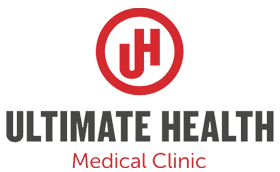Back Pain in Littleton CO

Back Pain in Littleton CO can be a real bummer. It would undoubtedly improve your quality of life to have less back discomfort, whether it's acute or chronic pain that plagues you. This chronic back pain might affect everything, from sleeping in bed comfortably, to enjoying a good quality of life, all the way up to causing spinal cord injury! This becomes an issue for some people who experience permanent nerve damage due to their condition being so severe. They may be left permanently disabled with no hope of recovery unless something major changes. Luckily, chiropractic therapy is available throughout Littleton CO, so feel free to contact us today if this sounds like what's been bothering you! Achieving long-term back health is necessary for a healthy lifestyle. Chiropractic therapy can help you enjoy your daily activities more freely, such as going on walks in the park or playing sports without worrying about pain.
DO YOU SUFFER FROM BACK PAIN IN Littleton CO?
There are many components that make up the back. It can be difficult to locate and treat pain without understanding these various parts, but chiropractic care will assist in resolving it by pinpointing where on your body you are experiencing discomfort or other symptoms of injury. A chiropractor has a lot of schooling when it comes to the delicate bones and muscles of the spine, which means they'll know exactly how best to help! There are a number of reasons why you may be experiencing discomfort, but this article is really meant as a general guideline. It's a good idea to get examined and treated by an expert in chiropractic if you think you may be suffering from spine-related problems.
WHAT ARE DISC BULGES AND HERNIATIONS?
When the jelly-like center of a spinal disc (located between the vertebrae) bulges or is pushed out as a result of an injury, this is called a herniation. Some people will experience unbearable pain with this condition, while others with disc problems have no symptoms at all. However, for individuals who are in pain, the severity and location can be determined by where their herniation occurs. When a damaged disc irritates your nerve, shooting or stabbing pains may be experienced, as well as leg weakness.
The chiropractor in Littleton CO will examine your back thoroughly to evaluate the extent of the problem and the best course of action that prevents further complications. They want you to get relief from pain as soon as possible!
HOW TO MANAGE SUBLUXATIONS
A subluxation is what happens when the spinal column is misaligned. Injuries, stress, poor sleeping posture, and toxins are just a few examples of things that can cause subluxations. Your body, with its' various links and connections from your spine, to your brain, to your nerves, and more, can be affected by subluxations in ways you didn't know were connected. Fortunately, chiropractors are trained in fixing and realigning the spine using non-invasive adjustments so that you can feel your best in all areas of health.
MUSCULAR DAMAGE FROM SPRAINS, TENDON OR LIGAMENT STRAINS
Strains and sprains are among the most common injuries we face as a result of performing jobs or activities that our bodies aren't accustomed to. Back strains can be caused by twisting too much while lifting or even bending over backward without some form of support. These types of injuries often lead to painful swelling and bruising around the affected area and often require chiropractic care.
HOW CHRONIC STRESS AFFECTS BACK PAIN
Chronic stress can lead to long-term health problems like hypertension and chronic back pain. The release of hormones in response to stressful situations causes muscle spasms, which in turn create painful trigger points. The only way to address these painful trigger points is with the help and expertise of a professional. Littleton CO chiropractors have education and training in relieving tension from these areas along with finding underlying imbalances that may be keeping you stuck in stressful and tension-filled cycles.
Our team at Ultimate Health Medical Clinic would love to help if you have any questions or are dealing with back pain. Book a consultation today!
OFFICE HOURS
Monday
9:00am - 12:00pm
2:00pm - 6:00pm
Tuesday
9:00am - 12:00pm
2:00pm - 6:00pm
Wednesday
8:00am - 12:00pm
2:00pm - 6:00pm
Thursday
9:00am - 12:00pm
2:00pm - 6:00pm
Friday
8:00am - 12:00pm
Saturday & Sunday
Closed
Ultimate Health Medical Clinic
7735 W Long Dr Unit 12
Littleton, CO 80123



